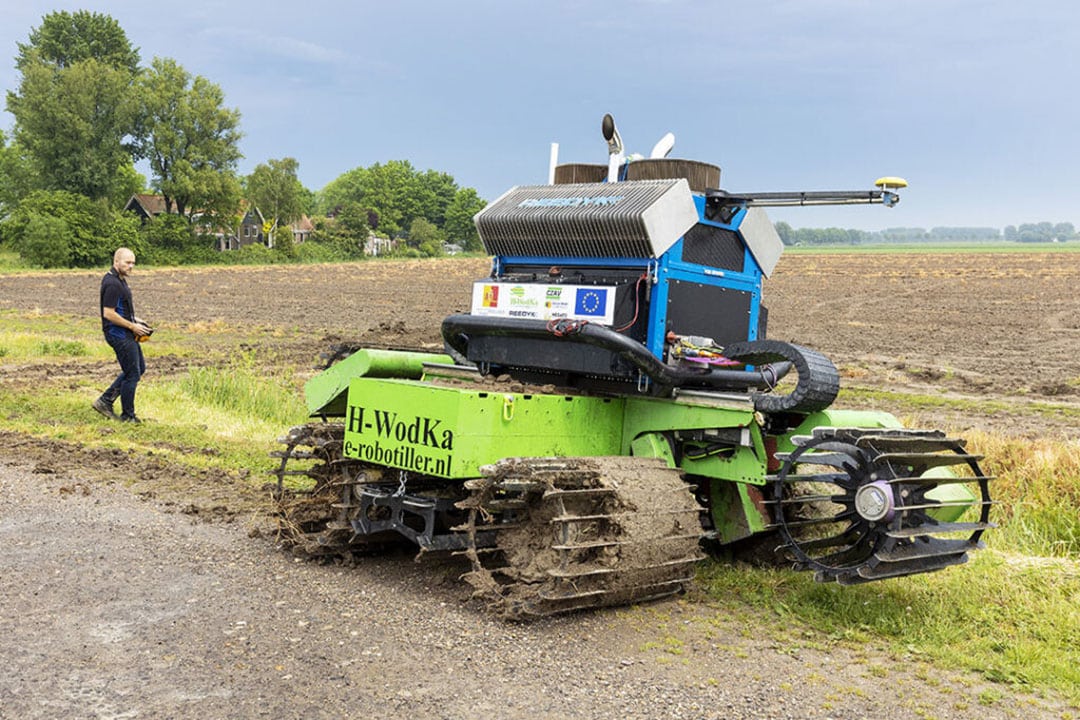E-robotiller field robot makes its public debut

The Dutch e-robotiller was recently presented to the public for the first time in the Netherlands. The e-robotiller is a field robot designed for tillage. The machine is powered by a hydrogen fuel cell.
The e-robotiller is developed by a group of innovative arable farmers from the Netherlands, united under the name HWodKa.
The e-robotiller originated from a search for agricultural implements and methods that spare the soil as much as possible, so that the production conditions remain optimal. That means as little pressure as possible that is distributed as evenly as possible.
E-robotiller silent and emission free
The e-robotiller is intended for seedbed preparation and consists of a front and a rear roller, with a crumbler in the middle. The robot is fully autonomous and is electrically driven by electricity from a fuel cell. The fuel cell converts hydrogen into electricity. The machine is both noiseless and emission-free. The fuel cell is a detachable power pack, which means that it can also be mounted on other implements.
Text continues below image

The demonstration in Goudswaard, the Netherlands was abruptly interrupted by heavy rainfall. This turned the top layer into mud.
The e-robotiller is equipped with six 50 litre hydrogen bottles. The vehicle can run on those for about 3 hours, with an average delivered power of 40 to 45kW. The fuel cell can deliver a maximum of 90kW. When constantly driving at maximum power, there is therefore enough fuel on board for 1.5 hours’ work.
Text continues below video
Hydrogen refuelling
At 200 bar, a 50 litre bottle contains 1 kilo of hydrogen. This has an energy content of 8 litres of diesel fuel. The efficiency of converting hydrogen into electric power is 65%. A diesel engine effectively delivers only 30% of its potential power to the crankshaft.
However, converting electricity to hydrogen costs a lot of energy, so the overall efficiency of the electricity-hydrogen-electric engine is around 30%.
Refuelling with hydrogen is very quick compared to refuelling with LPG or inflating a tyre. During a working day, a supply of hydrogen must be available at the field to refuel occasionally.

Join 17,000+ subscribers
Subscribe to our newsletter to stay updated about all the need-to-know content in the agricultural sector, two times a week.



